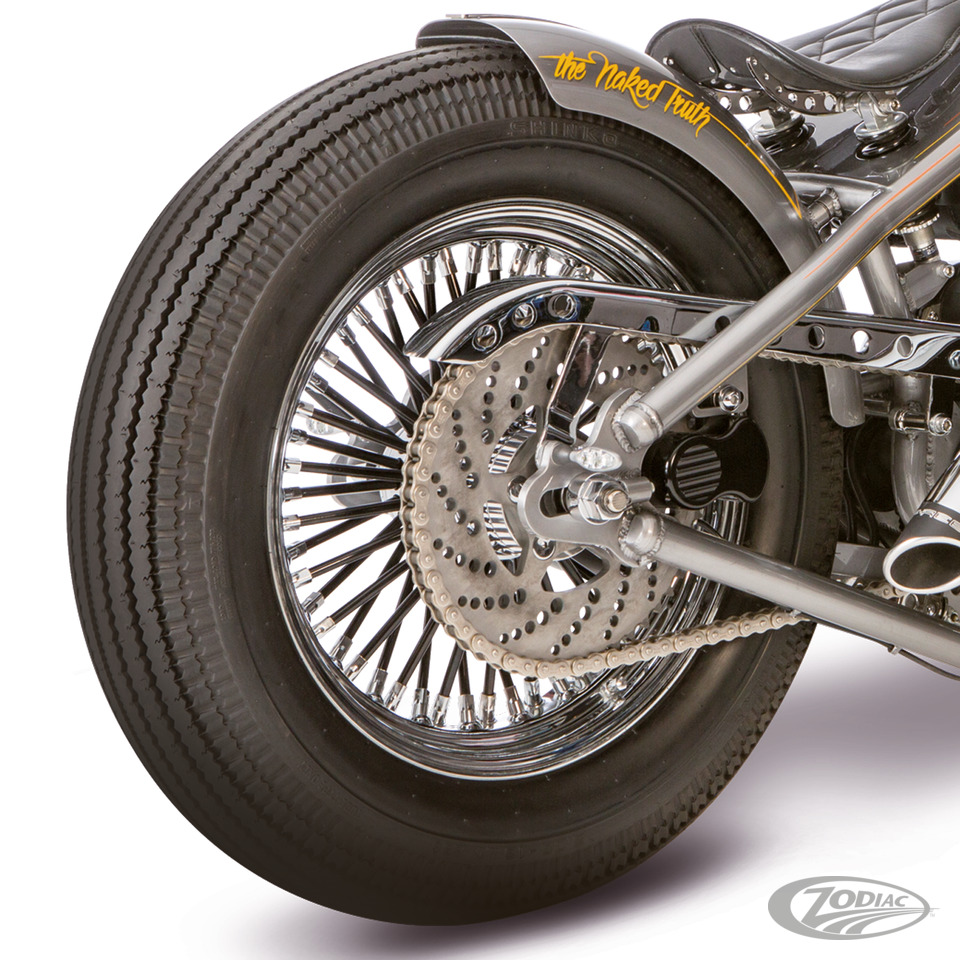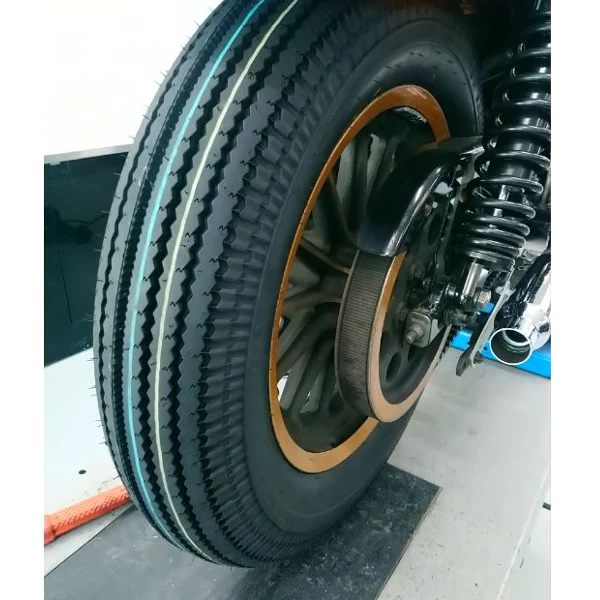A Deep Dive into Shinko e270 Tires
Attention, gentlemen! This article promises to delve into a detailed account of my latest endeavor with the Shinko e270 tires.
As part of this exciting journey, I decided to revamp the tires on my Sportster 72, and let me share this adventure with you.
Why the Shift to Shinko e270?
What prompted this switch, you ask? The Shinko e270 tires offer something distinct.
While they aren’t identical in size to the stock tires on my Sportster 72, they evoke a nostalgic charm I couldn’t resist. The rear tire, spanning 5 inches in width, fits a 16-inch rim, and the front counterpart, 3 inches wide, accommodates a 21-inch rim. The tread design on these tires, in particular, exudes a traditional old-school style, seamlessly aligning with the aesthetic I was aiming for.
Time for a Change
Another compelling reason for this change was the age of the stock tires on my bike. They’ve been serving me since 2015, the year I made the purchase. With time marching on, it felt right to bestow my bike with a fresh set of treads. And thus, the journey commenced. The initial phase entailed jacking up my bike, followed by the removal of the wheels. The next leg of this venture led me to the tire shop, where the Shinko e270s awaited their fitting.
Maintenance Alongside Tire Change
With the wheels already detached, it seemed opportune to indulge in some preventive maintenance. The wheel bearings were in dire need of greasing. Employing an old, blunt Stanley knife, I managed to remove the rubber seal, granting access to the bearings. Reattaching the seal and greasing the rear wheel bearings required the removal of my sprocket. To ensure a thorough job, I utilized brake cleaner to cleanse the bearing. While there was some surface rust visible on the bearing’s edge, it was heartening to note that the rust hadn’t permeated into the bearing. The movement was smooth and unhindered.
Revamping Wheels and Exploring New Gear
The journey of bike maintenance continued with the remedying of some surface rust.
Using sandpaper, I meticulously cleaned up the rust, ensuring the bearing was properly packed with grease. Once this task was done, I repositioned the seal, preparing the wheels for the new tubes and tires. Excitingly, the tires have returned, signaling that it’s time to reattach the wheels to the bike.
The Lure of Bell Moto 3 Helmet
While we’re on the subject of upgrades, let me introduce you to the Bell Moto 3 helmet, an accessory that has piqued my interest for quite some time. Observing that many motorcycle enthusiasts, particularly those riding choppers, sported this helmet, I too developed an inclination towards it. When I stumbled upon a sale, pricing this beauty at a mere 280 bucks, I couldn’t resist making the purchase. To further enhance its look, I borrowed goggles from an old motocross helmet of mine, adding a touch of flair to my new acquisition.
New Tires and the Bell Moto 3 Helmet
Once everything was in place, it was time for the ultimate test – a ride. As I hopped onto the bike, the new tires immediately made their presence felt. Their superior grip, attributed to their soft compound nature, was unmistakable. However, it’s essential to note that while these tires offer exceptional grip, they might not promise prolonged durability like medium or hard compound tires. What they might lack in lifespan, they certainly compensate for in grip, ensuring a safer and more stable ride.
Benefits and Trade-offs of the Bell Moto 3 Helmet
Transitioning to the Bell Moto 3 helmet, its distinct advantage lies in the enhanced field of view it offers. The broad visual range, a characteristic feature of goggles, surpasses that of a visor. However, it’s crucial to weigh the benefits against the potential downsides. While goggles provide an expansive view, they might not shield you as effectively from wind as a visor does, particularly in the facial region. But for those who prioritize vision over wind protection, the Bell Moto 3 helmet emerges as a clear winner.
A Dive into the Bell Moto 3 Helmet
After clocking in several hours on the road with the Bell Moto 3 helmet, I’m keen to share my honest thoughts.
For those in the market for a new motorcycle helmet, this insight might just help you decide whether this helmet meets your criteria or not.
Value for Money: A Critical Look
First off, the helmet’s sale price of 280 dollars was a steal. At this price point, I genuinely believe it offers value. However, there’s a catch. If I were to consider the original pricing of 389 dollars, I’d likely have second thoughts. One of the main reasons for this hesitation is the helmet’s inner lining. It didn’t quite match the quality I’d expect for a helmet priced near the 400-dollar mark. It felt a tad rough and gave off a budget feel.
What Drew Me to the Bell Moto 3 Helmet
So, you might wonder, what made me opt for this helmet? Here’s the breakdown:
- The sale price of 280 dollars was too good to pass.
- Its aesthetic appeal struck a chord with me. The design is undeniably captivating.
- It boasts a lightweight design without compromising on comfort.
- Having grown up riding dirt bikes, I’ve always had an affinity for motocross helmets. Their look and feel have always been a personal preference.
The Shinko e270 Tires: A Quick Mention
While the spotlight of this review is on the Bell Moto 3 helmet, it’s worth noting that I also got my hands on the Shinko e270 tires. Although a detailed review is for another time, my initial impressions are positive. These tires complement the helmet in delivering an enhanced riding experience.
Conclusion
In the vast world of motorcycle accessories, finding products that resonate with one’s preferences can be daunting. The Bell Moto 3 helmet, with its blend of style and comfort, manages to stand out, especially at its sale price. But, like all products, it has its strengths and weaknesses. While its design and weight make it a favorite, the quality of its inner lining leaves room for improvement. Coupled with the Shinko e270 tires, the journey on the road becomes an experience to relish. As always, it’s essential to weigh the pros and cons, and in this case, the Bell Moto 3 helmet proves its worth, especially for those who have an eye for style and a history with motocross helmets.





